(Tiếng Việt) Một vài nét tổng quan về ngành công nghiệp khai khoáng của Việt Nam
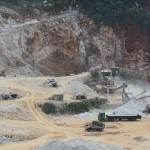
Sorry, this entry is only available in Vietnamese. lass='vietnam-color'>...
Communal Land

Customary and Communal Land PracticesCustomary practices of Land use are established patterns of behavior that are locally recognized in rules and customs, either oral or written 13. Unlike national Laws and policies, customary practices (sometimes called “customary Law”) are developed and adapted over time by Lass='vietnam-color'>...
Ethnic minorities and indigenous people

IntroductionVietnam is considered a multi-ethnic country, made up of 54 ethnic groups. The Kinh ethnic group makes up 85.4% of Vietnam’s population, or 78.32 million people. The remaining 53 ethnic groups make up only 14.6% of the country’s population (see Table 1).51Although Vietnam voted in lass='vietnam-color'>...
Ethnic minorities and indigenous people policy and rights

IntroductionThe Vietnamese Government recognizes 53 ethnic minorities134 Other counts suggest the existence of more than 90 groups, amounting to approximately 10 million people, or nearly 10% of Vietnam’s population.135 Most ethnic minorities inhabit remote areas of Vietnam and have their own belief systems which are lass='vietnam-color'>...
Urbanization in Vietnam

Vietnam’s economic transformation over the last three decades has been a remarkable success story. The country has gone from one of the poorest in the world to a thriving lower middle-income economy, thanks to comprehensive economic reforms and rapid structural transformation from an agriculture-based economy lass='vietnam-color'>...
State Public Land
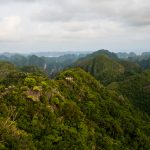
State Forest LandDuring revolution and national unification, the Vietnamese government nationalized agricultural and forest Land throughout the country. While agricultural Land was de-collectivized in the Đổi mới reforms since the mid-1980s, the majority of forest and forest Land has continued to be managed by state Lass='vietnam-color'>...
Development and assistance for ethnic minorities and indigenous people
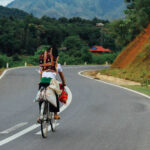
Vietnam’s civil society and ethnic minoritiesIntroductionIn Vietnam, ethnic minorities are supported by a network of non-governmental organizations, known as “civil society”. Civil society includes international non-governmental organizations (INGOs), Vietnamese mass organizations, Vietnamese umbrella organizations, Vietnamese NGOs (VNGOs), community-based organizations (CBOs), and professional organizations, although professional lass='vietnam-color'>...
Land
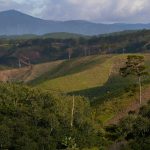
Vietnam’s 0.3 hectare of agricultural land per person is among the lowest in the world. Vietnam’s Constitution holds that land and other natural resources are "public property, owned by all the people..." Vietnamese law does not recognize customary forms of tenure, and communities (villages) do lass='vietnam-color'>...
Climate Change
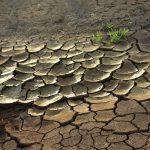
Climate Change (CC) is the change in weather, and related patterns of oceans, land, surface, and ice sheets such as temperature, ice melt, and sea level rise. While CC has historically been a natural occurrence, current CC is believed to be caused by human activities lass='vietnam-color'>...
Forests and Forestry
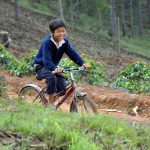
The Government of Vietnam considers forests an important ecological resource, valuable for the socio-economic development and well-being of communities throughout the country. Forests play a major role in adapting to climate change as well as in regular environmental functions such as preventing erosion and maintaining lass='vietnam-color'>...
Religions of Ethnic minorities in Vietnam

With 54 different ethnic groups coexisting, Vietnam is a multiethnic nation. Kinh people, the majority, who comprise 82 million people or 85.4% of the country’s population, and the remaining 53 groups of – ethnic minority (EM) people make up the remaining 14.12 million, or 14.6%.476 lass='vietnam-color'>...
Infrastructure

Investment in public infrastructure has been one of the key driving forces for Vietnam’s economic development over recent decades. Infrastructure accounted for 53% of total Official Development Assistance (ODA) received between 2010-2017.494Vietnam has heavily invested in transportation, particularly roads, airports, and seaports. Vietnam’s public and lass='vietnam-color'>...
Water resources
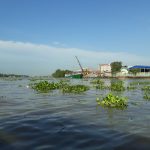
Water resources in Vietnam are quite diverse, comprising both natural and artificial water bodies. The countries water resources are under increasing pressure from over-exploitation due to increased irrigation demand, urban and industrial development, as well as concentrated areas of increasing population. 554 Ensuring national water security is lass='vietnam-color'>...
Poverty policy and regulation

The National Targeted Program on New Rural Development – 10 years review and way forwardIntroductionIn Vietnam, rural development is nearly synonymous with agricultural sector development. Agriculture itself is crucial in Vietnamese policy, as it forms the backbone of the country’s economy. Thus, rural development has lass='vietnam-color'>...
Population and Census
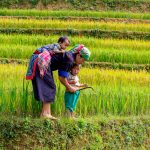
Vietnam’s population and housing census is conducted every ten years and begins on April 1st. The country has conducted five population and housing censuses since the revolution in 1975, specifically in April of 1979, 1989, 1999, 2009 and 2019.648 The fifth population and housing census lass='vietnam-color'>...
Aid and development

International aid plays a significant but decreasing role in Vietnam’s national expenditure. For example in 2013, official development assistance (ODA) as a percentage of the national budget had decreased to 11.2% from 25.4% in 2003.696 The nature of development assistance has changed a lot over lass='vietnam-color'>...
Land classifications

Land ConsolidationLand in Vietnam is divided into extremely small parcels by world standards. The average agricultural Landholding is 1,560 square meters per capita, which is less than one-third of standard holdings in ThaiLand or Cambodia. Up to 70% of rural households have Land use rights Lass='vietnam-color'>...
Forest policy and administration

Key LawsCircuLar No. 34/2009 / TT-BNNPTNT on the criteria for determining and cLassifying forests (2009)Decree No.117/2010/ND-CP on Organization and Management of the Special-Use Forest System (2010)Land Law (2013)Law on Forestry (2017)—repLaced Law on Forest Protection and Development (2004)CLassifying Forest LandAll Land and the natural resources Lass='vietnam-color'>...
Vietnam Digital Transformation Agenda

Vietnam is pushing toward Industry 4.0 with the government’s Digital Transformation Agenda (DTA) to leverage digital technologies to drive economic growth, improve governance, and promote social development. Digital transformation is being promoted as the key to unlocking the country’s two primary development goals: achieving net lass='vietnam-color'>...



